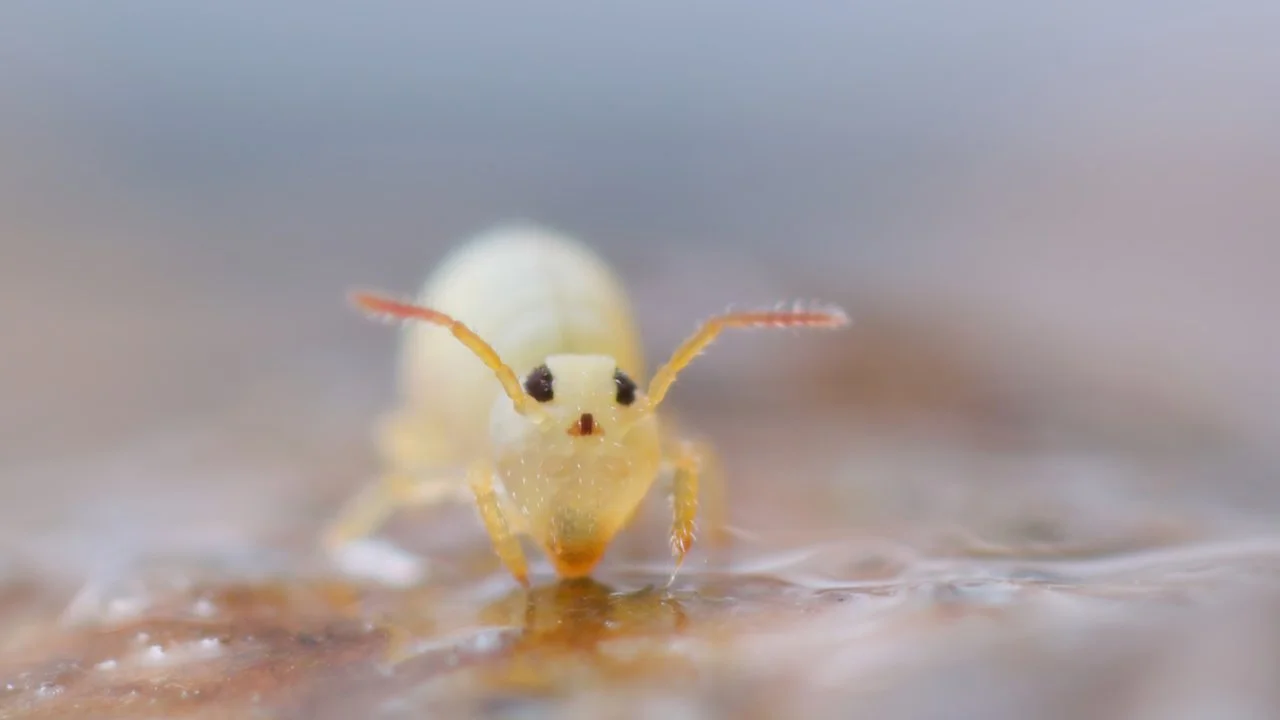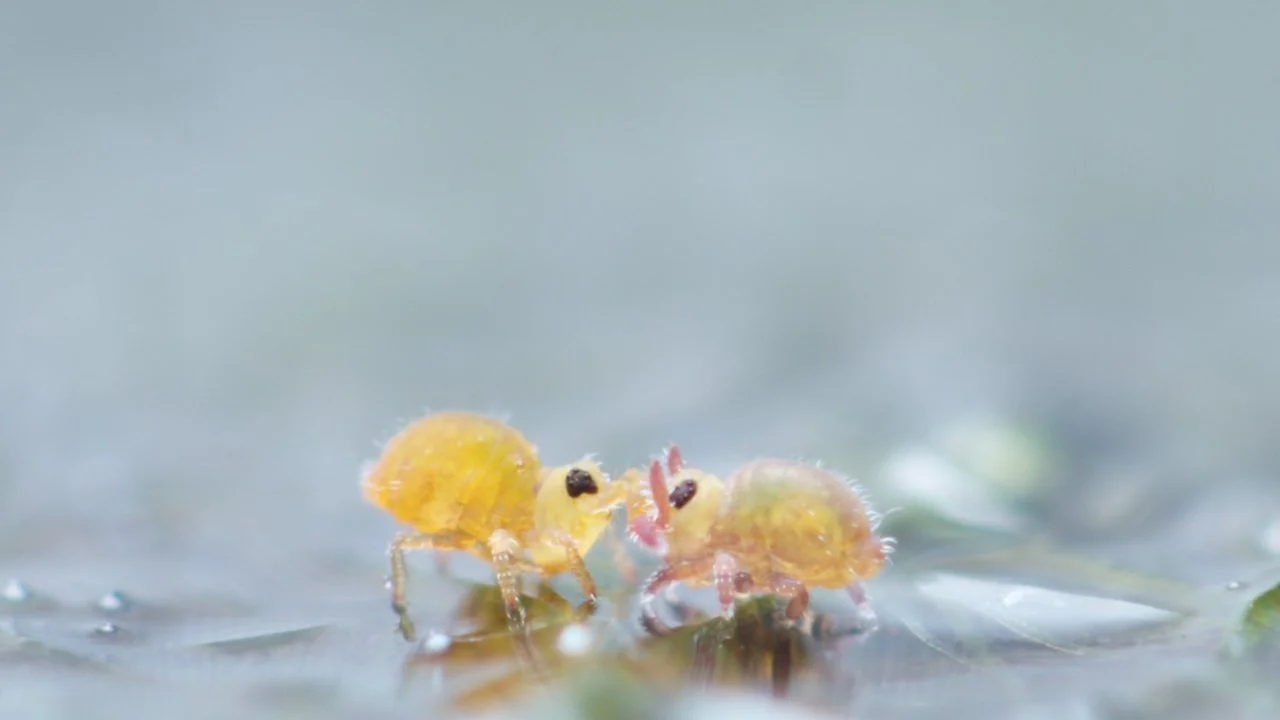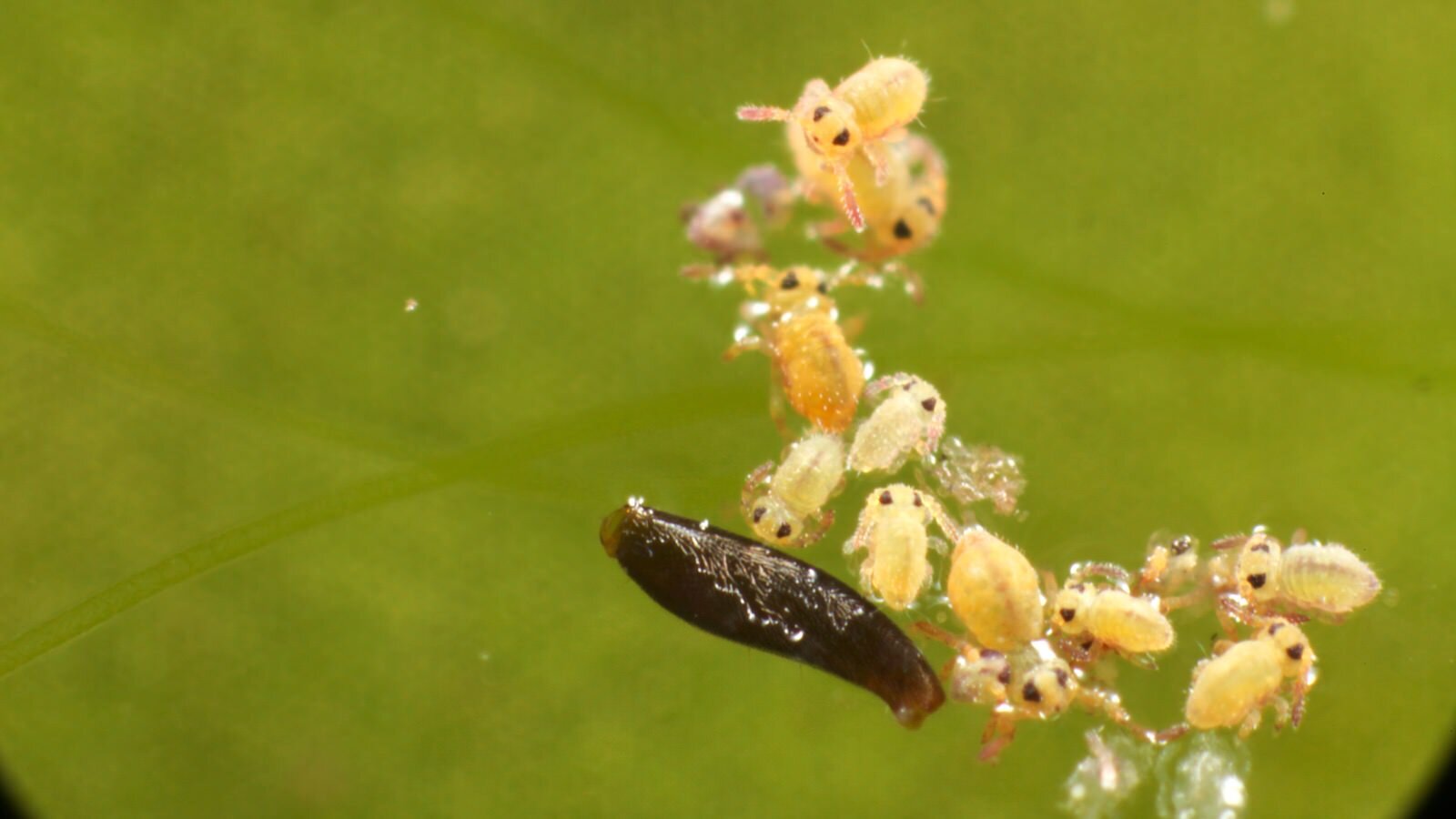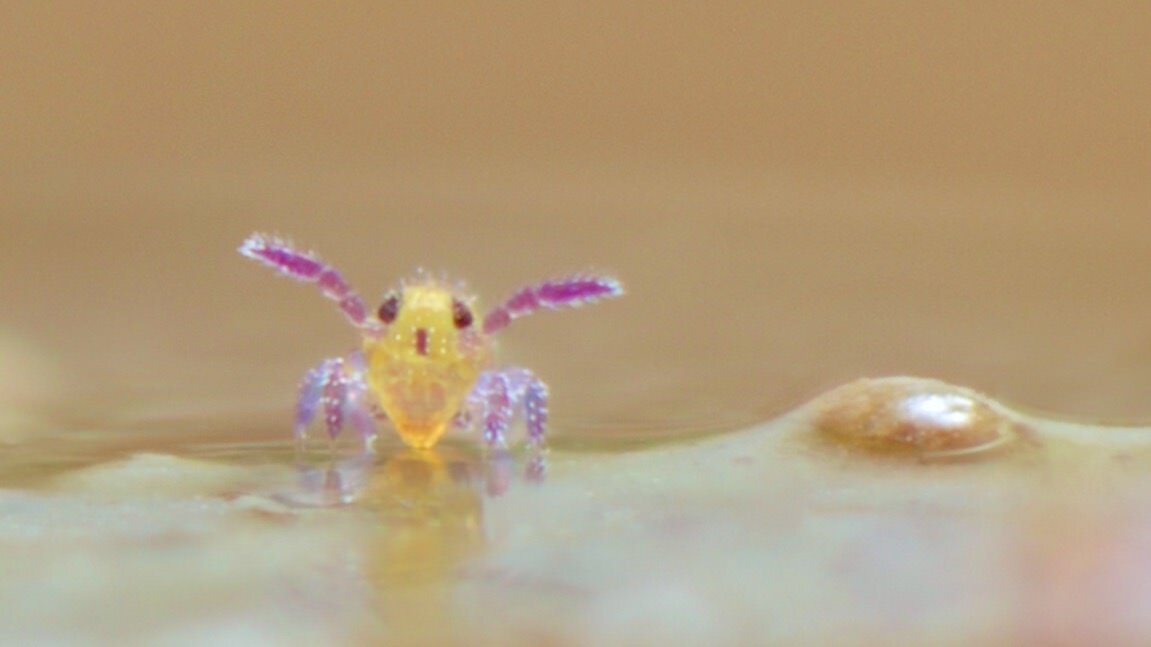Springtail of the month- Sminthurides aquaticus
Taking it easy. A female Sminthurides aquaticus poses on some pond weed.
For this, the first of a regular monthly post series, just to be contrary, on a soil animals blog, I’m concentrating on a completely non-soil Collembola, Sminthurides aquaticus. Just because I want to. They’re pretty cool.
Sminthurides aquaticus
The genus of Sminthurides contains many species, with quite a few solely water dwelling springtails worldwide. In the UK, S. aquaticus is by far the most common, although S. malmgreni can also be found in soil as well as skipping about happily on the water. Wherever there is still water or a small backwater, even a puddle, it’s possible to find Sminthurides. Although there is even a Sminthurides species that lives in dry volcanic vents in temperatures of 48 degrees centigrade.
Collembola aren’t ever fully aquatic, living under the water. Those that are associated with water are actually semi-aquatic, living by and on the surface of water, although adapted for that environment, but for ease, are still referred to as ‘aquatic’.
Sminthurides aquaticus was the first aquatic springtail I saw and photographed, back in 2012 on my own pond in Somerset.
In the video below, a juvenile Sminthurides aquaticus pesters an adult female repeatedly but is forcefully rebuffed. Notice some of the other females grazing on algae in the background. Play with the sound on as the blackbird singing in the background is rather beautiful…
Juvenile Sminthurides aquaticus, practicing the courtship ritual…
All Sminthurides species share two initial distinctive attributes- one, that the males are much smaller than the females, with specialised hooked antennae, and two- they perform a courtship ritual, and they are all adorable. Sminthurides species have a feeding phase and a breeding phase, separated by moulting.
Especially after rain, water tension and the famous Cheerios effect means that springtails, even aquatic ones, can get stuck, caught up together, en mass.
Water-adapted springtails have some extra distinctive features- A.-a widened, paddle shaped mucro and lamellae on the end of their furca or jumping organ, which provide better contact with the water when jumping, as well as B. an unguiculus or inner claw as long as the outer claw or unguis, stabilising the springtail’s connection with the water’s surface tension.
A Sminthurides aquaticus female struggling to remove a bit of bark from her mandibles.
As you can see from the female above, she is standing on the tips of her claws. You can also make out the water film lifting up the outside of her claw. And this is where it gets interesting. There is a lot of research about this effect, which enables aquatic springtails to walk on water. The outer surface of the claw, or unguis, is smooth and hydrophilic, attracting water into a concave meniscus, exerting a slight downward pressure. The inner sides of the claw have a water repelling surface and make a convex meniscus. Combined with the downward force of the animal herself, these opposing forces at play on each of the six claws means that the springtail stays firmly anchored on the water surface. There’s more information on this interesting physics question here.
Courtship
As adults, the male comes up to a receptive female and locks his antennae to hers. They then begin to slowly circle around until she lifts him of the the ground and carries the smaller male aloft, above her head. He eventually guides her to the spermatophore, which she then walks over and absorbs, fertilising her eggs before depositing them, often on pond weed or another a water surface plant.
She is also capable of jumping with him still attached. It’s a strange and rather incredible thing to watch and can continue for hours.
Below, two juveniles practice their courtship ritual.
Close to hatching S. aquaticus in their egg sacs on pondweed.
And this is the result, a few weeks later. Bouncing baby springtails.
Newly hatched Sminthurides aquaticus with an adult Isotomurus plumosus, a non-aquatic Entomobryid springtail
A close up of the adorable hatchling.They are around 0.1mm big.
Sminthurides aquaticus f. levanderi
There is an increasingly common colour form of Sminthurides aquaticus- S. aquaticus f. levanderi, with strong purple-lavender colouring. But all is not just peace and love in pond heaven. Aggressive behaviour has been occasionally observed in certain species. The Sminthurides species are often a culprit. Here, below, in the beautiful genteel setting of a Kew Gardens pond, two adult females get down to it with claw slashing and antennae beating. No-one knows why this happens in a communal species.
As the baby looks on…
Interestingly, this close up shows the reason why springtails’ scientific name is Collembola. The name means glue piston. This was coined by John Lubbock, a famous Victorian entomologist who first observed springtails sticking themselves to the substrate with their ‘collophore’ as this female has done, for general stability or in this case, while she fights. You can also see the concave meniscus of the water film around it.
Associated species
Sminthurides malmgreni courtship
Being a social, aggregative genus, S. aquaticus can often be found alongside other Sminthurides species like the afore-mentioned Sminthurides malmgreni, shown here in a courtship ritual.
Living on the water- Podura aquatica adult
Head on. The strange face of Podura aquatica
Another aquatic springtail species often found with S. aquaticus is Podura aquatica, an amazing and peculiar animal, the sole member of its genus. Podura aquatica is a reasonably common springtail that has lent its name to an entire order of Collembola- the Poduromorpha. Out of all the aquatic springtails, it probably has the nearest claim to being truly aquatic, as well as the only springtail to have a fully water bound existence.
Amazingly, also on my tiny garden pond where I filmed S. aquaticus was a new UK species of Collembola- an as yet undescribed Sminthurides species. The holotype specimens I collected now reside in the National History Museum, although the pond and the springtails that lived there were bulldozed immediately after I left by the owner, a South Somerset Green Party candidate, so the locality and the springtail no longer exists there. It’s hard to understand the mentality of anyone who could quite happily destroy a new UK species while saying that they believe in biodiversity and green politics. It still makes me angry.
Here they are below. The nearest thing I have to an epitaph.



















